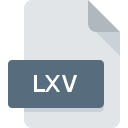.LOCKED File Extension

Ransomware Encrypted File
| Developer | N/A |
| Popularity | |
| Category | Encoded Files |
| Format | .LOCKED |
| Cross Platform | Update Soon |
What is an LOCKED file?
In the realm of cybersecurity, few phenomena are as alarming and disruptive as ransomware attacks. Among the arsenal of tools wielded by cybercriminals, one particularly nefarious tactic involves the encryption of files, rendering them inaccessible to users until a ransom is paid.
Central to this tactic is the .LOCKED file extension, a marker of files that have fallen victim to ransomware encryption.
In this article, we delve into the origins, history, technical specifications, and implications of the .LOCKED file extension, as well as strategies for dealing with it.
More Information.
The history of the .LOCKED file extension is intertwined with the evolution of ransomware itself. Ransomware, in various forms, has been around since the late 1980s, but it wasn’t until the early 2000s that it began to proliferate in the digital landscape.
Initially, ransomware was relatively simplistic, often displaying fake warnings or locking screens to extort payments from users.
As cybersecurity measures improved, so too did the sophistication of ransomware, leading to the widespread use of encryption techniques to lock down files, hence the birth of the .LOCKED file extension.
Origin Of This File.
The .LOCKED file extension serves as a grim emblem of ransomware attacks, a type of malware that infiltrates systems and encrypts files, holding them hostage until a ransom is paid.
Ransomware attacks have been plaguing individuals, businesses, and even government entities for years, with the .A LOCKED file extension often accompanies the encrypted files.
File Structure Technical Specification.
The .LOCKED file extension doesn’t denote a specific file format; rather, it serves as an indicator that a file has been encrypted by ransomware.
The actual encryption process varies depending on the specific ransomware strain used in the attack. Typically, ransomware employs strong encryption algorithms such as AES or RSA to scramble the contents of files, making them inaccessible without the decryption key held by the attacker.
Once encrypted, the affected files are appended with the .LOCKED extension, signaling to the user that their data has been compromised.
How to Convert the File?
Converting a file with the .LOCKED extension isn’t a typical conversion process like changing a file format from one type to another. Instead, it involves decrypting the file to restore it to its original state.
Since .LOCKED files are encrypted by ransomware, the primary goal is to recover the file’s contents by decrypting it. Here are the general steps to convert a .LOCKED file:
- Identify the Ransomware Strain: Different ransomware strains use different encryption algorithms and keys. Identifying the specific ransomware that encrypts your files can help determine if a decryption tool is available.
- Research Decryption Solutions: Security researchers and cybersecurity firms often release decryption tools for known ransomware strains. These tools can decrypt files without needing to pay the ransom. Look for reputable sources such as antivirus companies or cybersecurity forums for decryption solutions specific to the ransomware that encrypts your files.
- Download and Run Decryption Tool: Once you’ve found a decryption tool for the ransomware in question, download it from a trusted source. Follow the instructions provided with the tool to run it on your computer. Decryption tools typically require you to select the encrypted files and initiate the decryption process.
- Backup Encrypted Files: Before attempting decryption, it’s crucial to back up your encrypted files. Decrypting files can sometimes fail or cause further damage, so having a backup ensures you don’t lose your data permanently.
- Decrypt Files: Run the decryption tool and select the .LOCKED files you want to decrypt. Follow the prompts to begin the decryption process. Depending on the size and number of files, decryption may take some time.
- Verify Decryption: After the decryption process completes, verify that your files have been successfully decrypted. Open a few decrypted files to ensure they are accessible and intact. If any files remain encrypted or corrupted, you may need to seek alternative solutions or professional assistance.
- Secure Your System: Once your files are decrypted, it’s essential to secure your system to prevent future ransomware attacks. Update your operating system and software, use reputable antivirus software, and practice safe browsing habits to reduce the risk of infection.
Advantages And Disadvantages.
From the perspective of cybercriminals, the .LOCKED file extension offers several advantages. Firstly, it instills fear and urgency in victims, increasing the likelihood of compliance with ransom demands.
Encryption provides a layer of anonymity for attackers, making it difficult for law enforcement agencies to trace and apprehend them.
The disadvantages of the .LOCKED file extensions are manifold. For victims, the loss of access to critical files can result in significant financial losses, reputational damage, and operational disruptions.
Paying the ransom does not guarantee the recovery of files or protection against future attacks, perpetuating a vicious cycle of extortion and victimization.
How to Open LOCKED?
Open In Windows
- Prevention: Keep your Windows system and software updated with the latest security patches to mitigate vulnerabilities exploited by ransomware.
- Mitigation: Use reputable antivirus software to detect and block ransomware infections before they can encrypt your files.
- Recovery: If your files are encrypted with the .LOCKED extension, refrain from paying the ransom and instead attempt to restore files from backups or utilize decryption tools provided by cybersecurity firms.
Open In Linux
- Prevention: Apply security best practices such as limiting user privileges, using firewalls, and implementing intrusion detection systems to safeguard Linux systems against ransomware attacks.
- Mitigation: Employ file integrity monitoring tools to detect unauthorized changes to files, which may indicate ransomware activity.
- Recovery: Similar to Windows, prioritize file backups and leverage decryption tools if available to restore encrypted files without succumbing to ransom demands.
Open In MAC
- Prevention: Enable Gatekeeper and other security features on macOS to prevent the execution of unsigned or malicious software that may introduce ransomware.
- Mitigation: Regularly audit and monitor macOS systems for unusual network activity or file encryption patterns indicative of ransomware.
- Recovery: Utilize Time Machine backups or third-party backup solutions to restore encrypted files to their pre-infected state.
Open In Android
- Prevention: Download apps only from official sources such as the Google Play Store, and be cautious of granting excessive permissions to apps that may facilitate ransomware attacks.
- Mitigation: Install reputable antivirus software on Android devices to detect and remove ransomware threats proactively.
- Recovery: If files on your Android device are encrypted with the .LOCKED extension, consider resetting the device to factory settings and restoring data from backups stored on secure cloud services or external storage.
Open In IOS
- Prevention: Jailbreaking iOS devices can compromise their security and increase the risk of ransomware infections, so refrain from jailbreaking your iPhone or iPad.
- Mitigation: Keep iOS devices updated with the latest software updates from Apple to patch known security vulnerabilities exploited by ransomware.
- Recovery: In the event of a ransomware attack on iOS, restore affected devices to factory settings and recover data from iCloud backups or iTunes backups stored on a secure computer.
Open in Others
For other operating systems or devices not covered above, such as IoT devices or embedded systems, prevention is paramount.
Implement network segmentation, device hardening, and regular security audits to mitigate the risk of ransomware attacks targeting these platforms.













